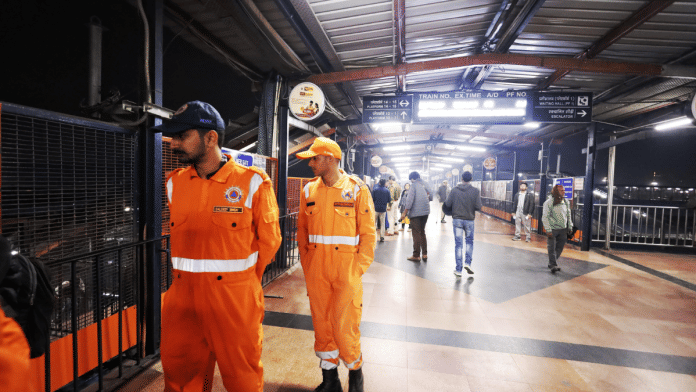New Delhi: At least 18 people were killed in a stampede as chaos ensued at the New Delhi Railway Station on Saturday. While an investigation is underway to determine the exact cause, overcrowding and the overselling of tickets appear to have played a major role.
However, this is not the first time such a tragedy has occurred at an Indian railway station, nor is it the first involving devotees traveling for religious festivities. Over the years, stampedes have taken place across the country, often worsened by peak travel seasons, last-minute cancellations, and inadequate safety measures.
Bandra, 2024
It was 5:20 in the morning of 27 October, when a surge of passengers attempted to board the slow-running Bandra-Gorakhpur express train on the eve of the Diwali-Chhat season. Overcrowding quickly led to panic, with desperate travelers pushing and shoving in an attempt to secure space. The train, one of three heading in the same direction, had over 500 or 22 percent extra tickets sold, forcing passengers to cram into already packed compartments.
As the chaos escalated, some passengers lost their footing and fell into the gap between the train and the platform, sustaining serious injuries. Ten people were hurt in the incident, five of whom required hospitalization, with two in critical condition. The cancellation of a scheduled night train had worsened the situation. Questions were raised about the Railway authorities’ capacity to anticipate and manage the overcrowding effectively.
Surat, 2023
On 11 November, the Surat railway station became the site of a deadly rush when over 5,000 passengers gathered to board Bihar-bound trains ahead of the Chhath Puja festival.
The overwhelming crowd led to a stampede on platform number 4, resulting in the death of a 36-year-old passenger and serious injuries to two others. The tragedy occurred as passengers struggled to enter the overcrowded coaches of the Surat-Bhagalpur Express.
In response to the crisis, Western Railway officials increased the number of reserved trains and ticket counters at both Surat and Udhna railway stations to manage the rush and deployed more teams to avoid overcrowding.
Elphinstone, 2017
At least 23 people lost their lives and 39 others were injured in a stampede at Mumbai’s Elphinstone Road railway station on 29 September 2017. The incident occurred during the morning rush hour when a large crowd attempted to cross a narrow footbridge that had become slippery due to rain. As more commuters tried to push their way through, panic set in, triggering a deadly crush.

Most of the victims suffered from chest compression and hemorrhages due to the intense pressure of the crowd. The combination of a congested bridge, wet conditions, and an overwhelming number of commuters made the situation uncontrollable. Witnesses later reported delays in emergency response, which may have worsened the toll of injuries and fatalities. The tragedy sparked widespread criticism of Mumbai’s railway infrastructure and led to urgent upgrades in footbridges across the city.
Allahabad, 2013
During another Kumbh mela, 12 years back, an eerily similar incident occurred at the then-Allahabad, now Prayagraj, railway station. Chaos unfolded when a railing on a footbridge collapsed, triggering panic among a huge crowd. The incident resulted in the deaths of at least 36 pilgrims, mostly women, and left over 45 injured on 10 February 2013.
Despite the Indian Railways operating 69 special trains in addition to 112 routine ones and deploying 14,000 police personnel, paramilitary forces, and commandos, crowd control remained inadequate.
The response was further hindered as ambulances took nearly two hours to reach the site, delaying crucial medical aid. The tragedy raised serious concerns over preparedness for large religious gatherings. Following the incident, Uttar Pradesh Minister Azam Khan, who headed the Mela organizing committee, resigned, accepting responsibility while maintaining that the stampede occurred outside the designated festival area.
Mughalsarai station, 2007
Uttar Pradesh’s Mughalsarai station, now known as Pandit Deen Dayal Upadhyaya Junction, saw the death of over a dozen women when multiple trains arrived simultaneously at the station causing panic.
On 3 October 2007, 13 women were killed and over 40 injured, when multiple trains arrived at the station simultaneously, causing panic among passengers. The victims, mostly women, were climbing the stairs of a footbridge when the crowd surged from both directions—some passengers trying to reach platform 4 for the Gaya-Mughalsarai Express, while others rushed down toward the arriving trains.
The stampede, occurring during a local festival, exposed serious gaps in crowd control and station management at one of India’s busiest railway hubs.
(Edited by Tony Rai)
Also Read: NDLS stampede: 11 women among 18 killed, half of the victims were residents of Bihar






